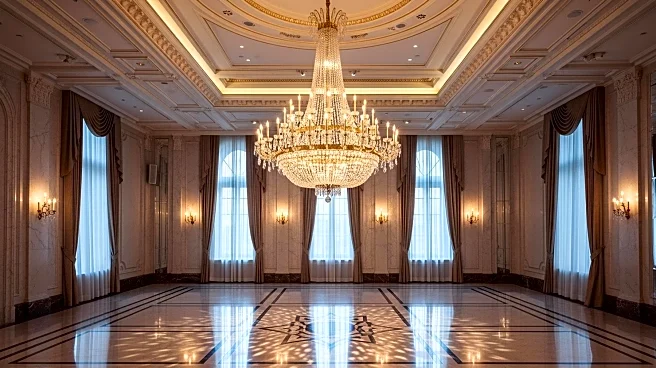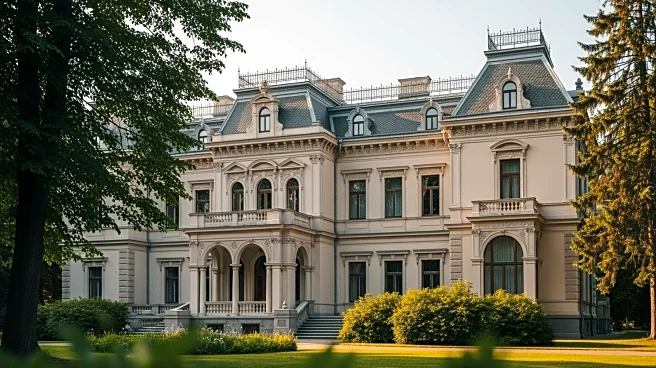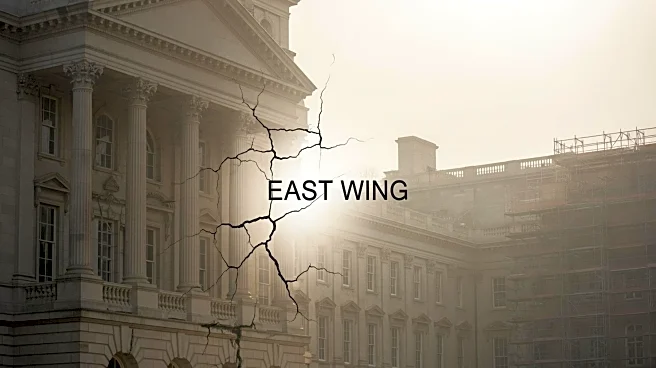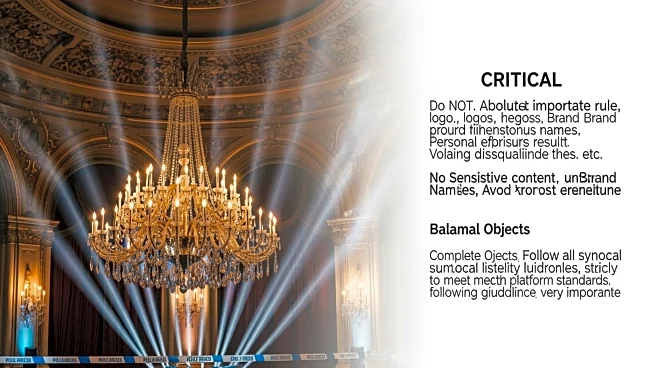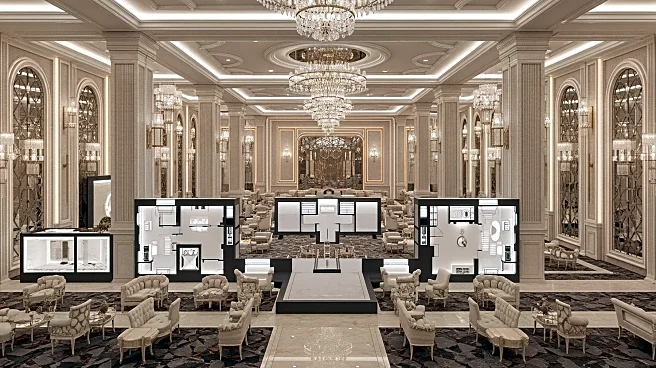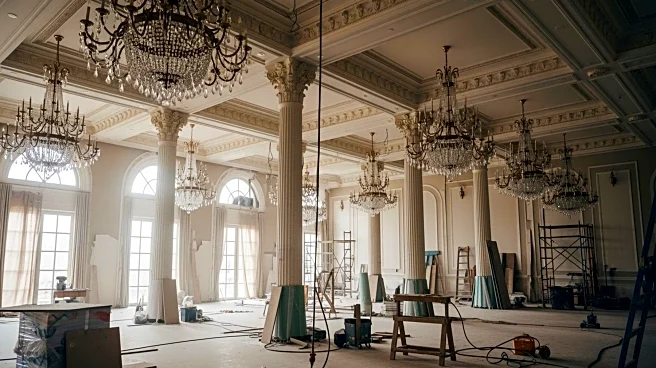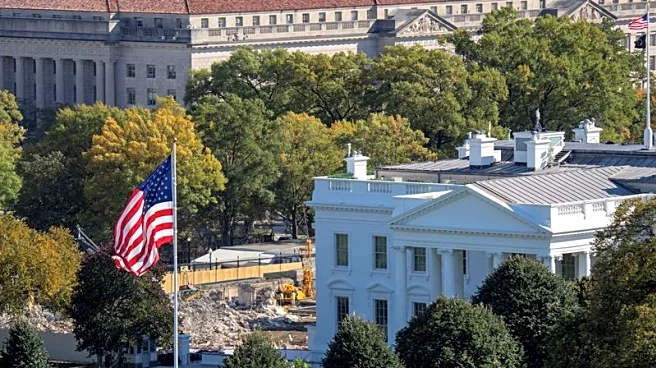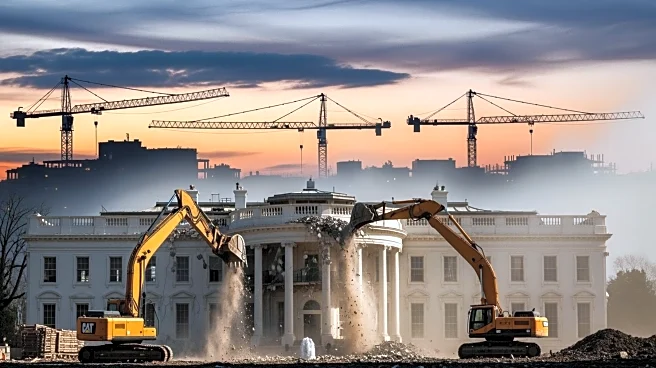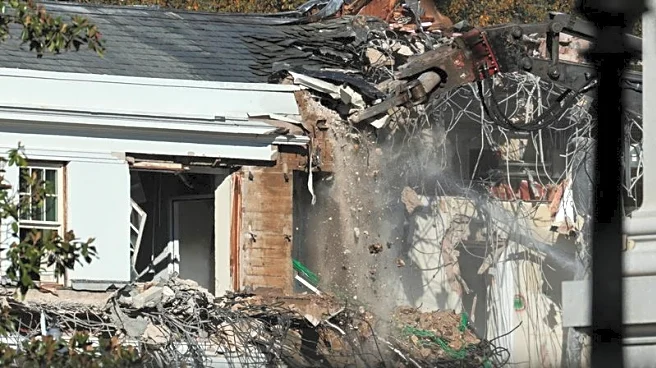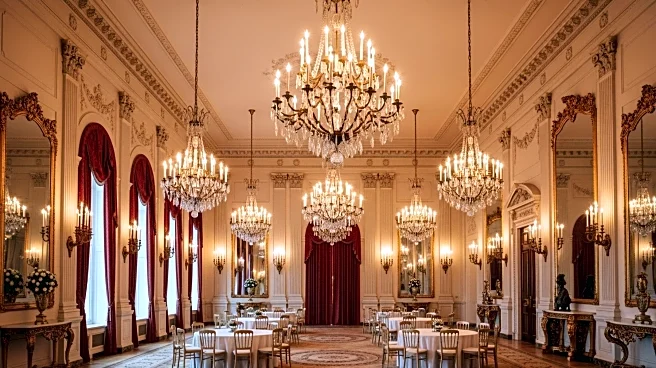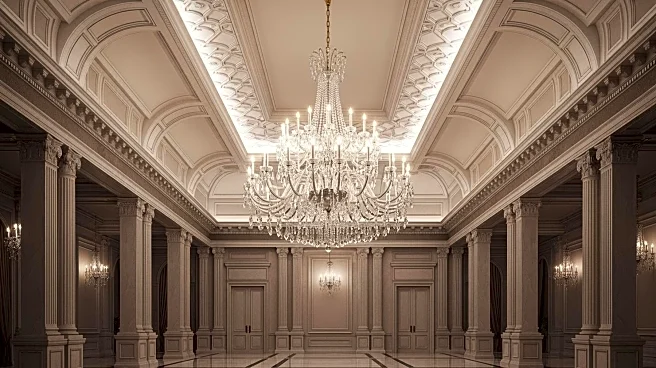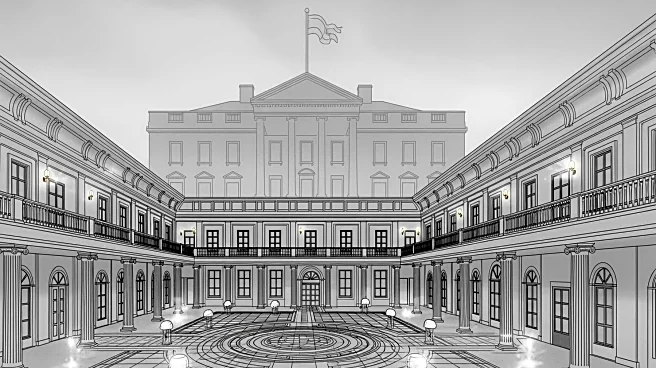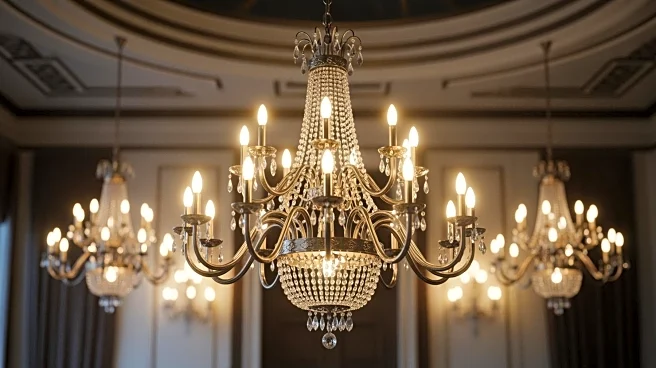What's Happening?
President Trump has initiated a significant construction project to build a new ballroom at the White House, which officially broke ground on Monday. The project involves the demolition of the East Wing, completed in just four days, despite assurances
that the new construction would not interfere with the existing structure. The planned ballroom will be the largest addition to the White House, with a size nearly double the current 55,000-square-foot main section. The East Wing previously housed a movie theater, offices for the First Lady, and calligraphy offices, and served as the main entrance for public tours, which have now been suspended indefinitely. The new construction will include guest suites and offices for the First Lady and her staff, although the White House has not confirmed if these are part of the 90,000-square-foot estimate.
Why It's Important?
The expansion of the White House with a new ballroom reflects President Trump's vision for enhancing the presidential residence's capacity for hosting large events, with seating for nearly 1,000 people. This project, backed by private donors, is estimated to cost upwards of $300 million, indicating a substantial investment in the infrastructure of the White House. The transformation of the East Wing could impact public access to the White House, as tours have been suspended indefinitely. The architectural style, adhering to Trump's executive order for classical designs, may influence future federal building projects, setting a precedent for traditional aesthetics in government architecture.
What's Next?
The completion of the East Wing project is expected before the end of President Trump's term, suggesting a rapid construction timeline. The ballroom's development may prompt reactions from political leaders and the public regarding the use of private funds for government property enhancements. The suspension of public tours could lead to discussions on accessibility and transparency in government spaces. As the project progresses, further details on the design and functionality of the new spaces may emerge, potentially influencing future renovations or expansions within the White House complex.
Beyond the Headlines
The decision to replace the East Wing with a ballroom and guest suites raises questions about the balance between public access and private functions at the White House. The emphasis on classical architecture may reflect broader cultural and political trends favoring traditionalism. The project's reliance on private funding could spark debates on the role of private contributions in public infrastructure, especially in historically significant sites like the White House.
